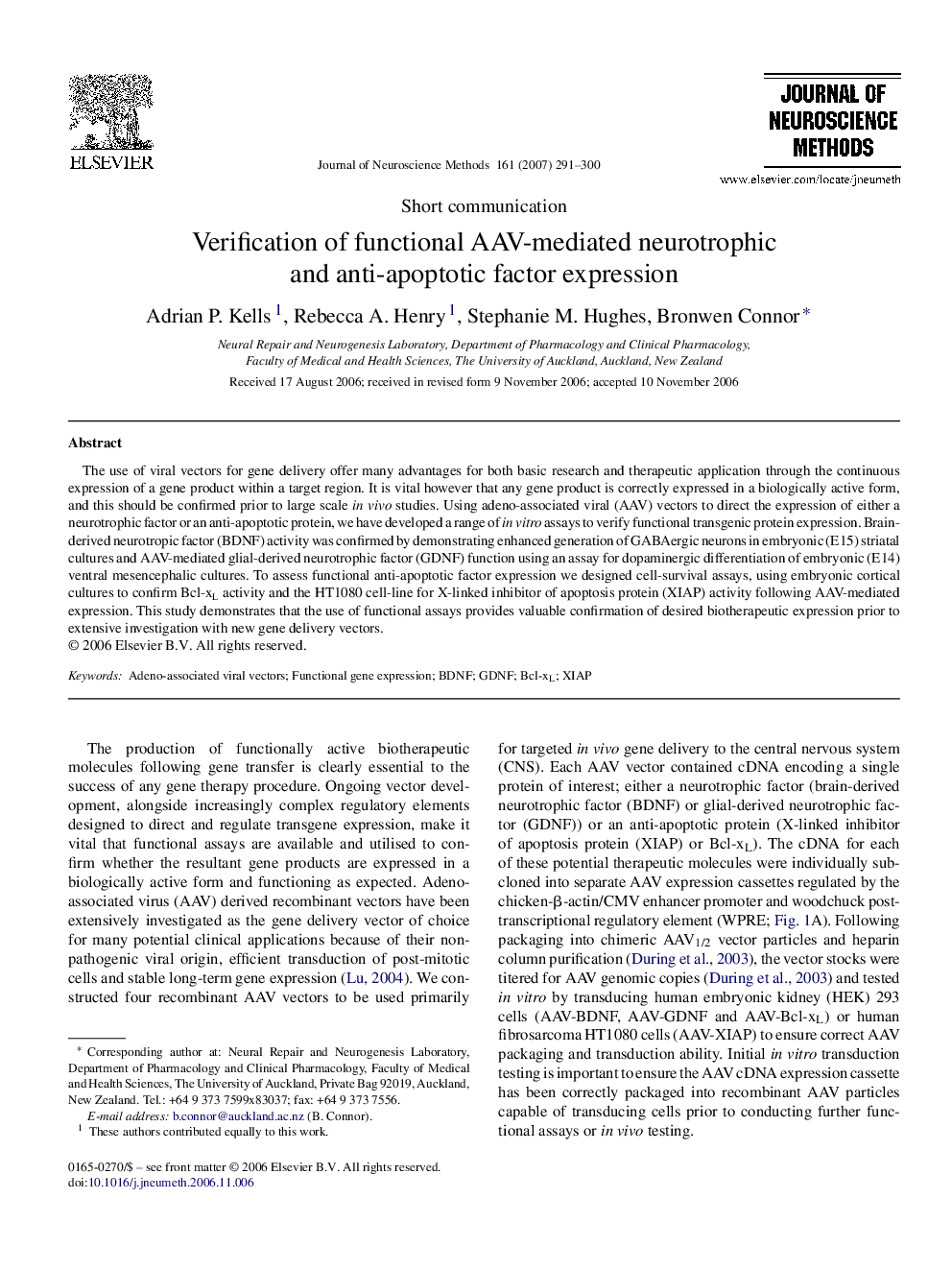| Article ID | Journal | Published Year | Pages | File Type |
|---|---|---|---|---|
| 4336658 | Journal of Neuroscience Methods | 2007 | 10 Pages |
The use of viral vectors for gene delivery offer many advantages for both basic research and therapeutic application through the continuous expression of a gene product within a target region. It is vital however that any gene product is correctly expressed in a biologically active form, and this should be confirmed prior to large scale in vivo studies. Using adeno-associated viral (AAV) vectors to direct the expression of either a neurotrophic factor or an anti-apoptotic protein, we have developed a range of in vitro assays to verify functional transgenic protein expression. Brain-derived neurotropic factor (BDNF) activity was confirmed by demonstrating enhanced generation of GABAergic neurons in embryonic (E15) striatal cultures and AAV-mediated glial-derived neurotrophic factor (GDNF) function using an assay for dopaminergic differentiation of embryonic (E14) ventral mesencephalic cultures. To assess functional anti-apoptotic factor expression we designed cell-survival assays, using embryonic cortical cultures to confirm Bcl-xL activity and the HT1080 cell-line for X-linked inhibitor of apoptosis protein (XIAP) activity following AAV-mediated expression. This study demonstrates that the use of functional assays provides valuable confirmation of desired biotherapeutic expression prior to extensive investigation with new gene delivery vectors.
